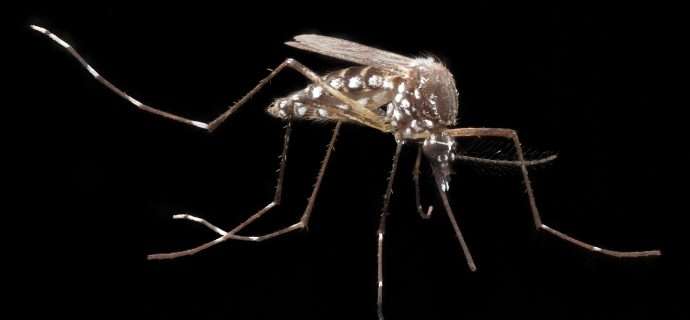Yellow fever global whack-a-mole

While many in the community of neglected disease scientists and public health experts in the Western Hemisphere consider 2016 the year of the Zika virus, across the Atlantic Ocean an equally ominous Yellow fever (YF) epidemic was underway in sub-Saharan Africa. It began in December 2015 and throughout the year of 2016 raged through Angola and Democratic Republic of Congo (DRC). In August of 2016 a difficult two-week long YF emergency vaccination campaign was held in Kinshasa, the DRC Capitol, in which more than seven million people were vaccinated. An innovative aspect of the Kinshasa vaccination campaign was to use fractional doses of the YF vaccine in order to extend an otherwise inadequate supply of available vaccine. The effort was impressive for its size and scope – according to the World Health Organization (WHO) an estimated 30 million people were vaccinated in both nations, employing tens of thousands of volunteers in thousands of mass immunization teams, under the auspices of the DRC and Angola Governments, WHO, UNICEF, Gavi, CDC, and a Global Outbreak Alert and Response Network (GOARN).
In addition, the WHO states that a unique vaccine stockpile had to be created, maintained, and managed through a productive partnership of Médecins Sans Frontières (MSF), UNICEF, WHO, and the International Federation of Red Cross and Red Crescent Societies (IFRC),. Ultimately, on November 25, 2016 the WHO declared that four months had passed without a case linked to the outbreak, perhaps signaling that it had come to an end. Overall, it is estimated that the 2016 African YF outbreak resulted in more than 7,000 suspected cases and almost 400 deaths.
Now just as the African outbreak has possibly (and hopefully) ended we're seeing evidence of new outbreaks of YF in Brazil. According to the latest (January 26, 2017) update from the Pan American Health Organization (PAHO), during the month of January more than 500 cases of YF with over under 100 deaths have been reported in six Brazilian states, with more than one-third of the deaths in the state of Minas Gerais. Just on January 30th, the Sao Paulo Health Department said it has confirmed six people with yellow fever in its area, four of whom were infected in Minas Gerais. All died. The Minas Gerais outbreak probably began in December of 2016, and is likely associated with so-called jungle or forest YF transmitted by Haemagogus mosquitoes, but there is always the risk that YF could become urbanized if Aedes aegypti becomes involved in virus transmission. PAHO estimates that more than five million doses of YF vaccine have been distributed to the affected Brazilian states.
There are additional concerns that YF could become globalized as a new case was reported from China among an expatriate worker from Angola, and there is always the threat of disease introduction to the Middle East from the annual Hajj pilgrimage.
Are we seeing a new normal? In a previous PLOS Speaking of Medicine blog last year we asked, "what's with these vector borne diseases" out of our sense of bewilderment in the Western Hemisphere at the sudden rise of dengue, chikungunya, and Zika virus infection, together with the rise of Chagas disease in Venezuela and evidence of transmission in Texas. Similarly, Southern Europe has seen upticks in malaria, dengue, chikungunya, West Nile virus infection, and schistosomiasis, while visceral and cutaneous leishmaniasis (kala-azar) cases have exploded in East Africa and the Middle East, respectively.
The reasons why we might be witnessing a sharp rise in vector-borne neglected tropical diseases during the 2010s remains a bit of a mystery. It is very likely that the rise of modern forces (that one of us ascribes to the "Anthropocene") such as climate change, urbanization, human migrations, and deforestation, together with the changing nature of global poverty, contributes to this new norm. Indeed, in their YF model Kraemer et al identified higher population densities, human mobility, and other ecological and demographic factors for the 2016 African outbreak.
At PLOS NTDs we are watching closely the rise of vector borne NTDs and are interested in rapid publishing of papers related to this topic. We are also hoping to organize our YF papers into a new collection of current and future articles. We welcome YF papers from the NTD community to address this growing and worrisome threat.
More information: Moritz U G Kraemer et al. Spread of yellow fever virus outbreak in Angola and the Democratic Republic of the Congo 2015–16: a modelling study, The Lancet Infectious Diseases (2016). DOI: 10.1016/S1473-3099(16)30513-8
Qanta A. Ahmed et al. Yellow fever and Hajj: with all eyes on Zika, a familiar flavivirus remains a threat, Frontiers of Medicine (2016). DOI: 10.1007/s11684-016-0487-2
Peter J. Hotez et al. Neglected Tropical Diseases in the Anthropocene: The Cases of Zika, Ebola, and Other Infections, PLOS Neglected Tropical Diseases (2016). DOI: 10.1371/journal.pntd.0004648
This story is republished courtesy of PLOS Blogs: blogs.plos.org.













